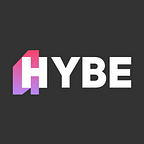The advantages and challenges of programmatic in-house for mobile app developers
In this article we will talk over the advantages and challenges of programmatic advertising that oftentimes face mobile marketing managers running user acquisition and retargeting activities in-house.
More brands and app companies are leaning toward implementing their advertising in-house, considering tremendous margins in install price of Google, Facebook and ad networks. More than a fifth (21%) of companies have completely transferred programmatic media buying in-house, and almost half (48%) have partially done it. At Hybe, we see growing interest in our solutions in running in-house performance campaigns both from app developers and agencies.
In the last 10 years, the number of programmatic platforms grew significantly, but not many of them give clients the opportunity to control over media buying. Programmatic in-house in mobile marketing ensures transparency of media buying, improves the effectiveness of the campaigns but as any new market solution, in-housing has its advantages and challenges. So let’s give a look at them.
First, mobile marketing managers, who mainly work with affiliate or ad networks, have low awareness about programmatic, and are not ready to share all the necessary data to succeed. For example, user behavior data that helps to make the campaigns more effective from the get-go and start reaching the KPIs faster than without it.
If they are open to this channel, they get many things in reward. For instance, with programmatic user acquisition, managers can better understand where to find the right users; which placements, audiences, and creatives perform better. Also, they have full flexibility in performance analysis thanks to such tools as SQL accessibility of the campaign data on OpenRTB bid request level or many others.
However, if an app development company goes with the all-in approach, it should have enough internal resources for campaign management, analytics and optimization. They should understand that the bulk of work ought to be done on their side. At the same time, platforms like Hybe give the options of managed service, providing the same level of transparency in data, pricing and campaign management. It takes between 1–3 months to go through the learning curve and start achieving campaign goals. For companies with previous experience in programmatic, this learning curve is faster due to existing learnings to be used with the in-house platform.
Using programmatic in-house, app developers get full control over the media buying and any targeting options. Also, they can use more complex buying strategies like Dynamic Creative Optimization in user acquisition and retargeting, ad sequencing or use not available inventory in ad networks and many other things.
But still for many mobile marketers the challenge of taking programmatic in-house is that the majority of programmatic platforms work based on a CPM model plus technical fee which is either included in the media cost or invoiced separately, unlike ad networks that work on performance models like CPI and CPA.
Hence, advertisers have to take risks when paying on the media cost plus SaaS basis with the in-house platforms. However, in-house platforms soon reach performance goals after the ML training phase, but eCPIs during the initial phase of the launch might be significantly higher targets as ML doesn’t have enough data for precise predictions.
Oftentimes in-house DSPs don’t own any inventory, unlike ad networks and walled gardens, and it’s easier for them to work on a CPI basis because they have more control over their inventory. However, the growth of in-app header bidding puts the DSPs and ad networks in the same position. Own inventory allows walled gardens and ad networks to include 30–50% margins in the CPI, and programmatic in-house DSPs allow reducing this percentage up to 0 thanks to advanced MLs and plenty of data. That’s why more app companies will try programmatic in-house as the app market steadily grows, and more developers would like to try new channels to perform better and get more transparency.
The key points for the choice of advertising partners are still performance and transparency. Using in-house programmatic DSP, UA managers understand how much they pay for an impression to the publisher. So they can easily compare the cost of in-housing and managed black-box service and feel the difference. Moreover, app developers can find more hints for increasing the efficiency of campaigns in other advertising channels, using the in-house data.
As in-housing is quite a new channel, most of the platforms have more sophisticated interfaces that are not optimized for complex campaigns. That becomes a constraint for app developers for scaling their programmatic activities in-house, especially when they want to run their campaigns across different Geo and with diverse strategies. However, in Hybe platform for user acquisition managers there is an available user-friendly interface and all customized widgets needed for analysis and optimizations.
We considered the main advantages and challenges of taking performance mobile marketing activities in-house. And like many other channels, it comes with its favors and challenges. Looking to the future, at Hybe, we see that many threats appear to be advantages for app developers while advertising if dealt with in the right way.
